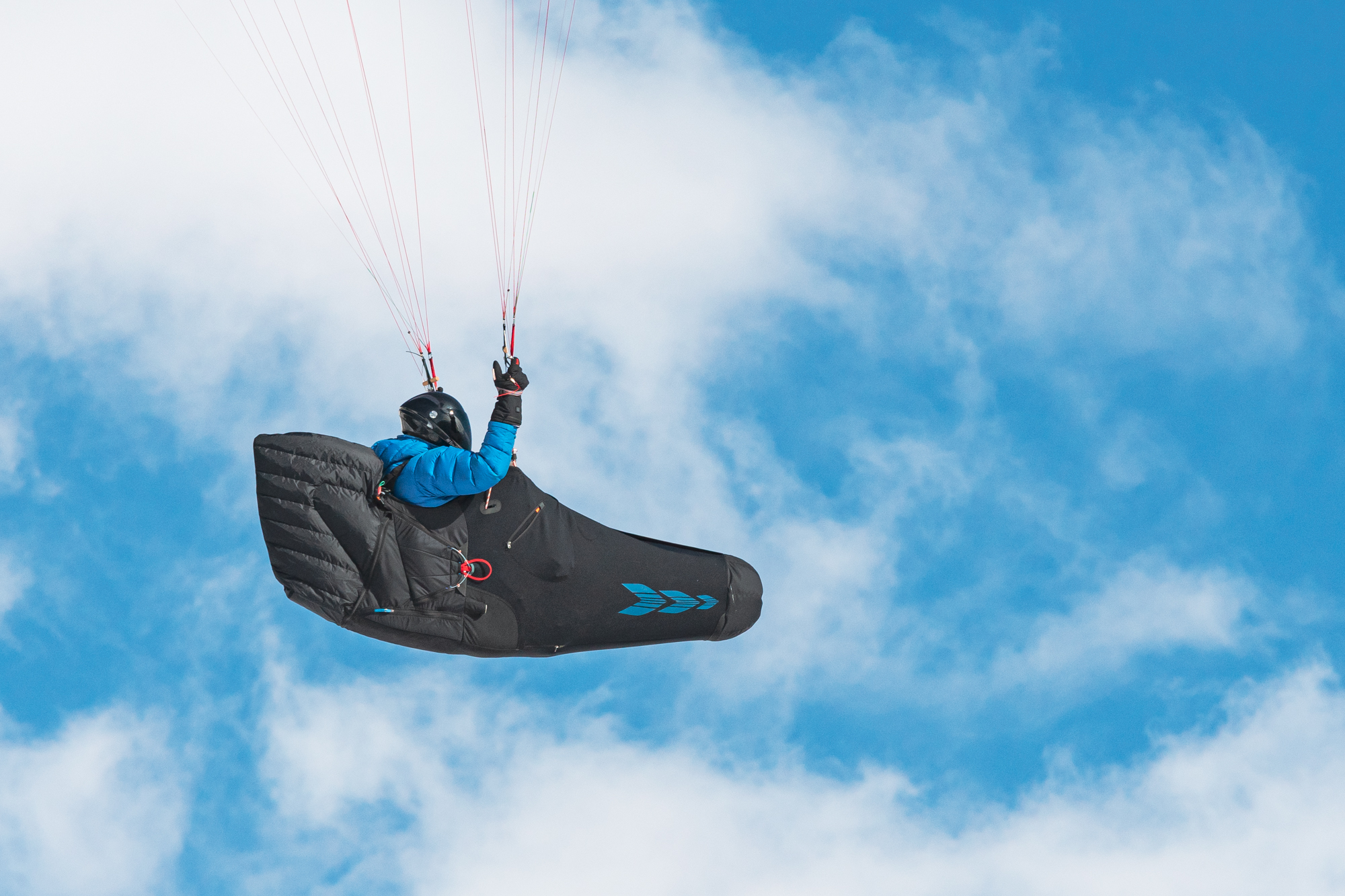
Thoughts on ... The comfort in a harness
Paragliding offers an extraordinary experience, allowing us to escape and sail through the sky. Whether it's a peaceful, contemplative flight, a descent from mountain peaks or an attempt to break distance records, we're comfortable in our harnesses from a few minutes to several hours. Whatever the case, it's essential to be in the optimum, comfortable position to fully enjoy these magical moments without suffering.
So it's essential to have a comfortable harness to make the most of these flying moments and prevent them from turning into a painful experience.
But what is the comfort of a harness? How do you define it?
Comfort, in general, refers to situations where the movements and positions of the human body are perceived as pleasant, providing a state of well-being, or eliminating any unpleasant sensation. When we're in our harnesses, it's the support offered to the body that creates this feeling of comfort. This support must be uniform and spread over a large surface area. It's important to avoid pressure points that could lead to discomfort or even pain. Comfort depends on the pressure exerted. For a given weight, the larger the contact surface, the lower the pressure applied.
SETTINGS
When trying out a harness, it's essential to settle in properly and experiment with the different settings available to best adapt it to your unique morphology. Some models may seem complex at first glance, but it's precisely these harnesses that will offer you real comfort for enjoyable flying.
The main settings on the harnesses are as follows:
Back adjustment: allows you to find a sitting or lying position. Each position will have a different influence on comfort, and we'll look at this in more detail later.
Lumbar adjustment: essential for adjusting lumbar support according to your position in the harness. This adjustment is essential for adapting the harness backrest as closely as possible to your body shape.
Length of cocoon or footrest (if fitted): adjusting the length of the support optimizes leg support during flight. Incorrect adjustment can make the harness uncomfortable, even if the other settings are correct.
It's important to take your time in the harness to detect any discomfort that may develop over time. Sometimes, a strap that is slightly too tight may not be felt for the first 5 minutes, but then become totally unacceptable as the fabric or body relax. Patience and care are therefore essential when assessing comfort over an extended period.
Let's take a look at the different parameters that can affect the comfort felt in a harness.
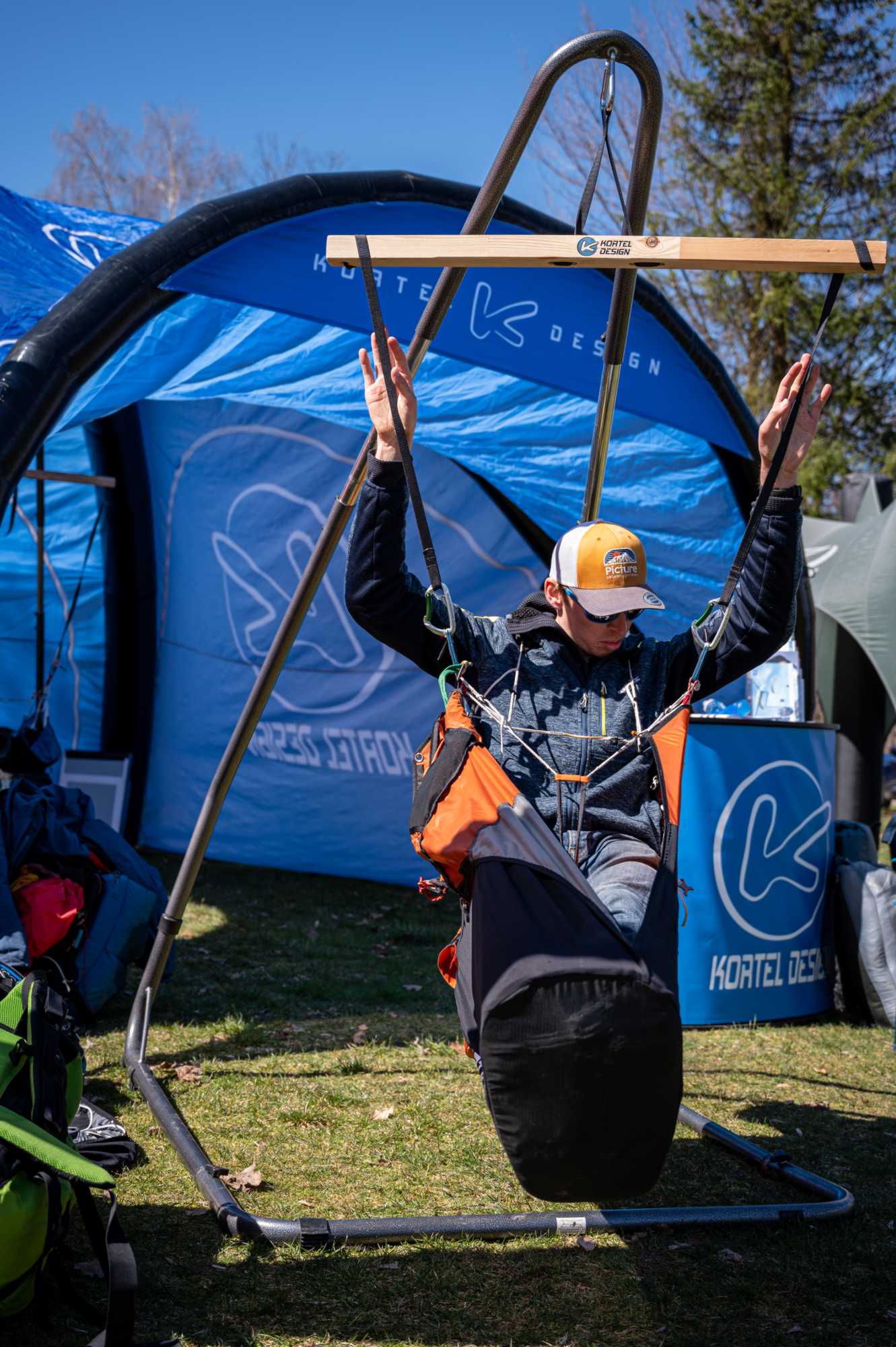
FABRICATION
The comfort of a harness depends not only on the settings, but also and above all on the meticulous work during manufacturing. The choice of materials, the shaping, the use of foams and the placement of seams all contribute to making it comfortable. The human body has many curves, difficult to shape with 2D pieces of fabric. Under the pilot's weight, these pieces can deform, resulting in uneven pressure and marked contact points. Various sewing techniques can be used to break down the shape and model it in 3D, with the quality of the designer playing a key role.
The comfort of a harness is not necessarily related to its weight, but it is certain that a well-executed, complex combination of materials will offer better support (and therefore better comfort) than a lightweight harness with little fabric.
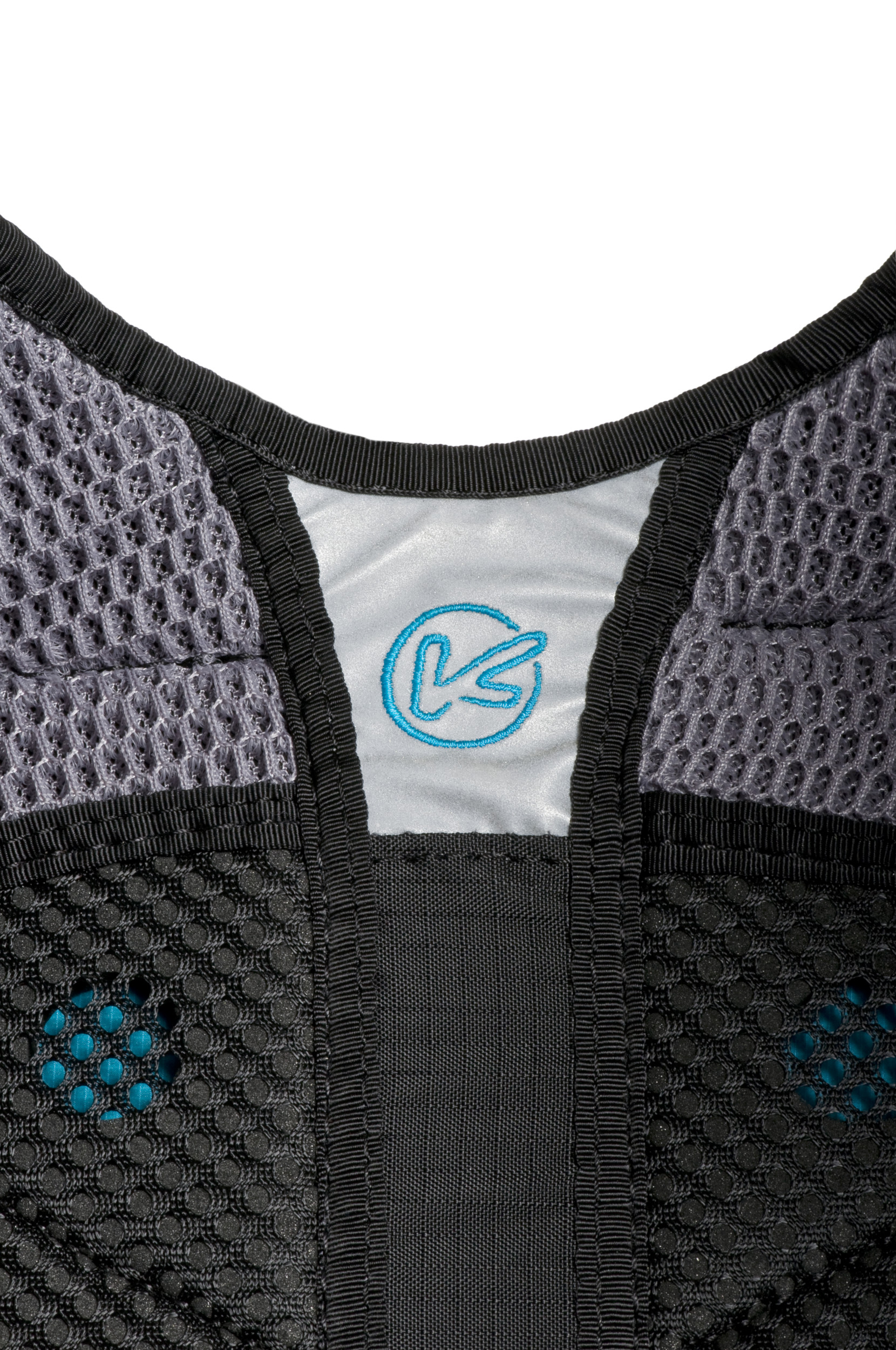
FLIGHT POSITION
(Sitting / reclining)
The comfort when using a harness is directly proportional to the pressure exerted on the pilot's body. Comfort is closely linked to the pilot's weight and the contact surfaces on the body. For a given weight, a larger contact surface will reduce the pressure felt by the body. By increasing these contact surfaces, it is therefore possible to improve harness comfort. For example, moving from a very seated position to a more rearward-tilted position increases the contact area, as illustrated in the diagram where the green contact area in the seated position is smaller than the red area in the reclined position. Since the pilot's weight remains the same, the pressure exerted on these contact zones will be reduced, improving overall comfort.
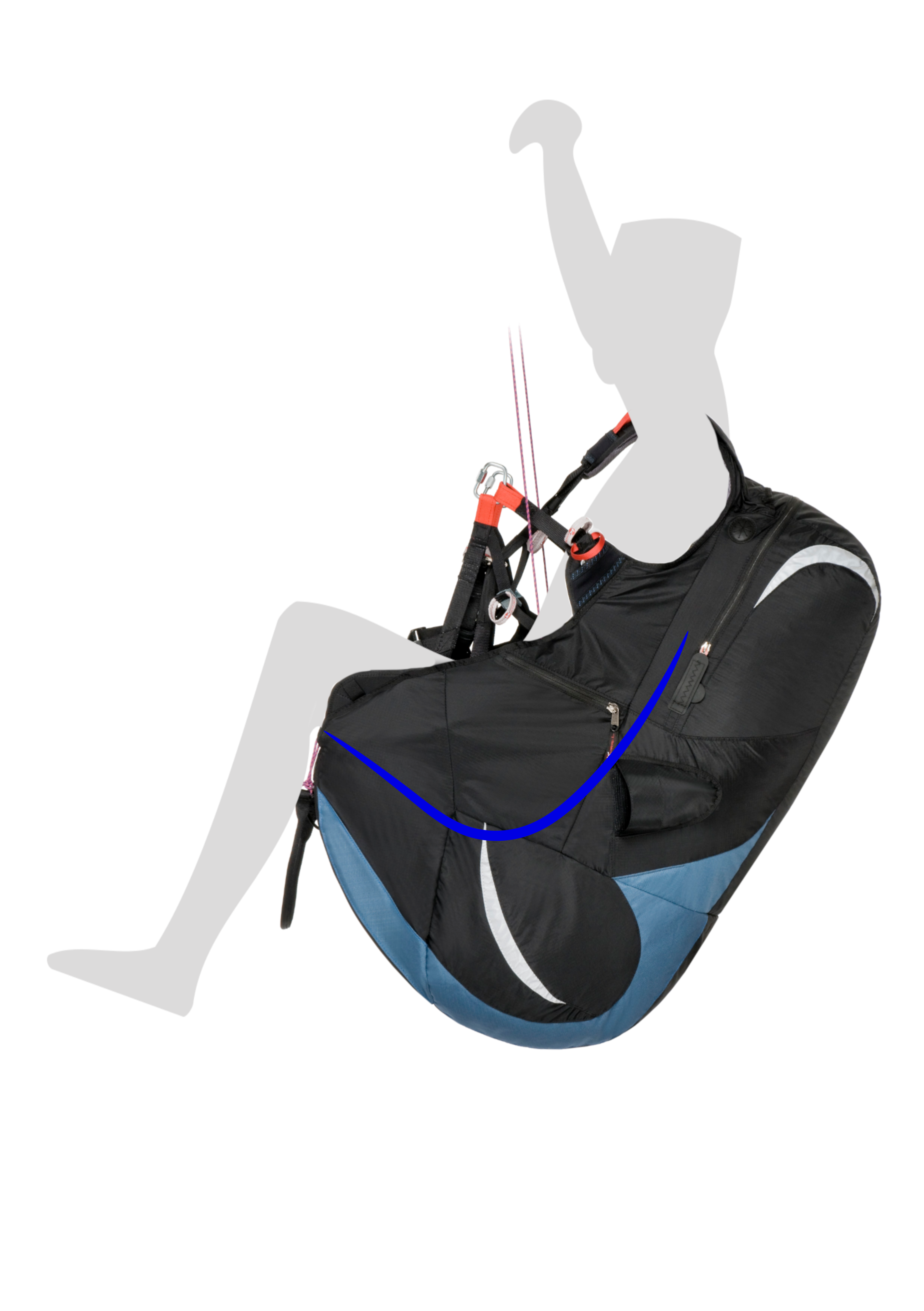
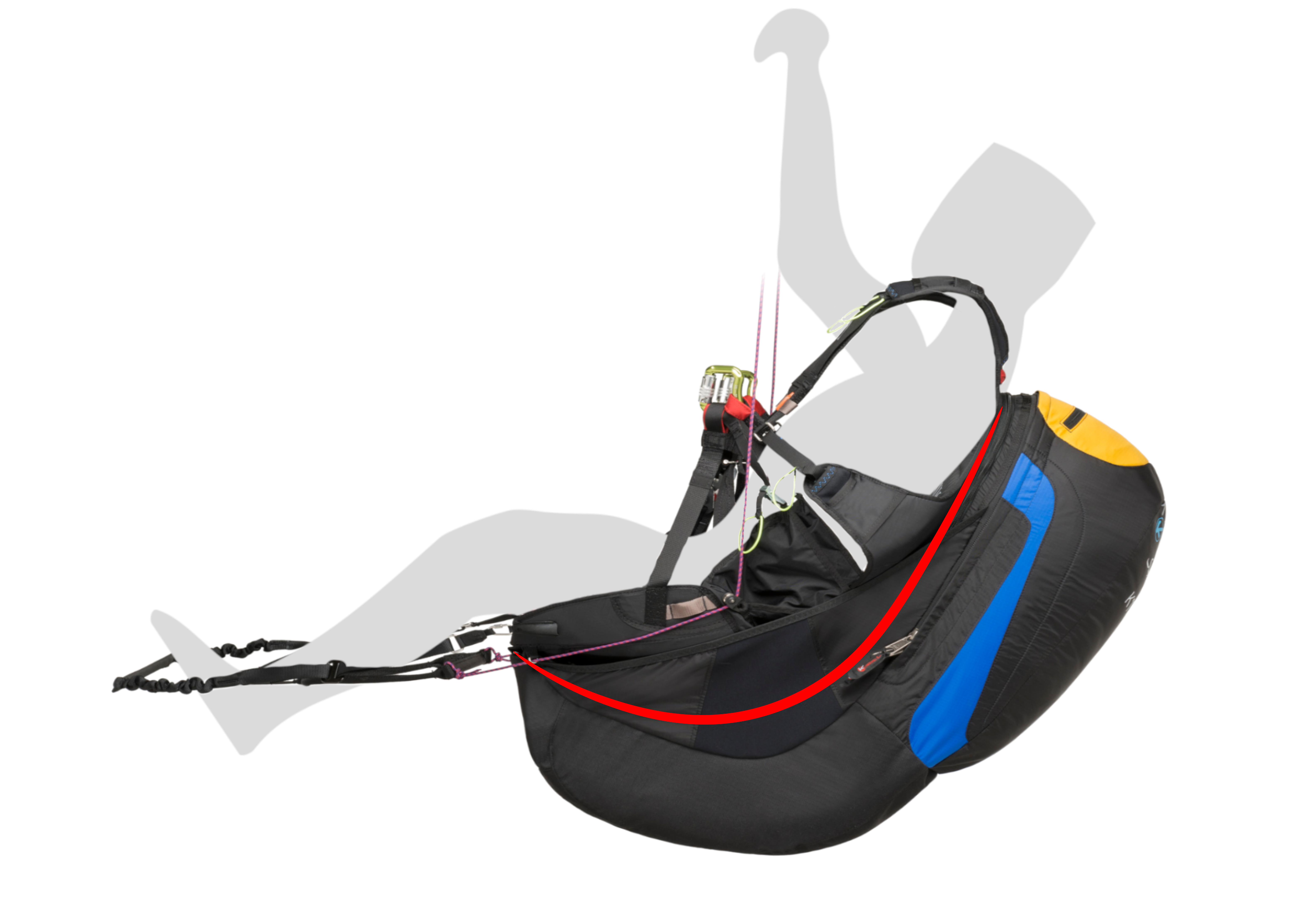
That's why the harnesses used at the beginning are generally of the seated type, as the flight time is generally shorter (in addition to other learning parameters). Of course, they won't prevent you from flying for long periods, but comfort will be worse after several hours than with a reclined harness.
If you'd like to improve the comfort of your seated harness without necessarily buying a new one, it's often possible to install a footrest. This allows you to extend your legs and adopt a semi-recumbent position, if the back adjustment of your harness allows you to do so.
PILOT EXPERIENCE
(Straight flight / Banking)
With experience, the position in the harness tends to evolve. Pilots in the learning phase, seeking to find thermals and stay aloft as long as possible to enjoy the sky, spend around 70% of their flight in turns and 30% in a straight line to get around. On the other hand, more experienced pilots, who are more efficient in thermals, don't try to stay in them longer than necessary, and accelerate in a straight line as soon as possible to cover as many kilometers as possible, spend 70% of their flight in a straight line and 30% in turns (unlike beginners).
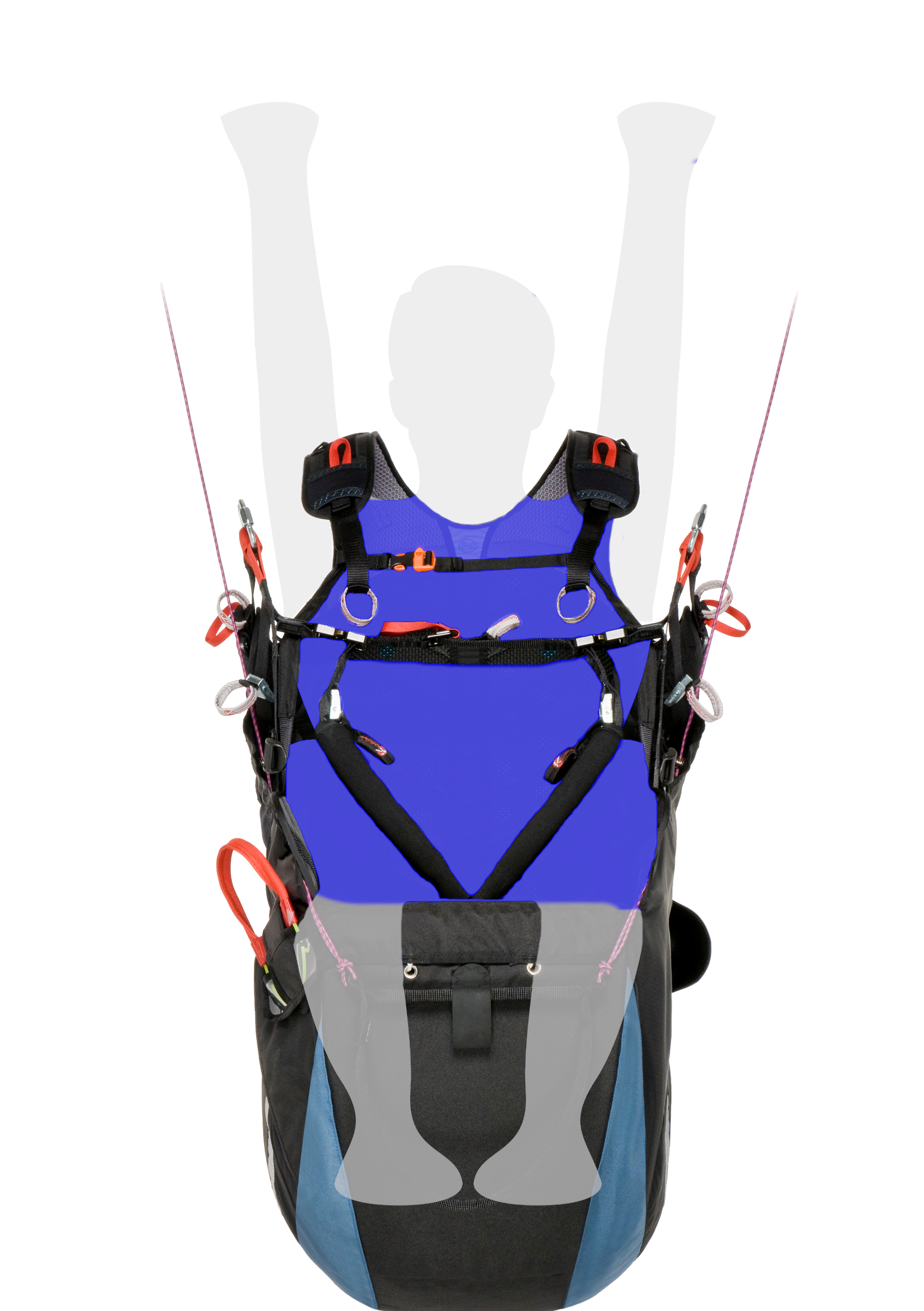

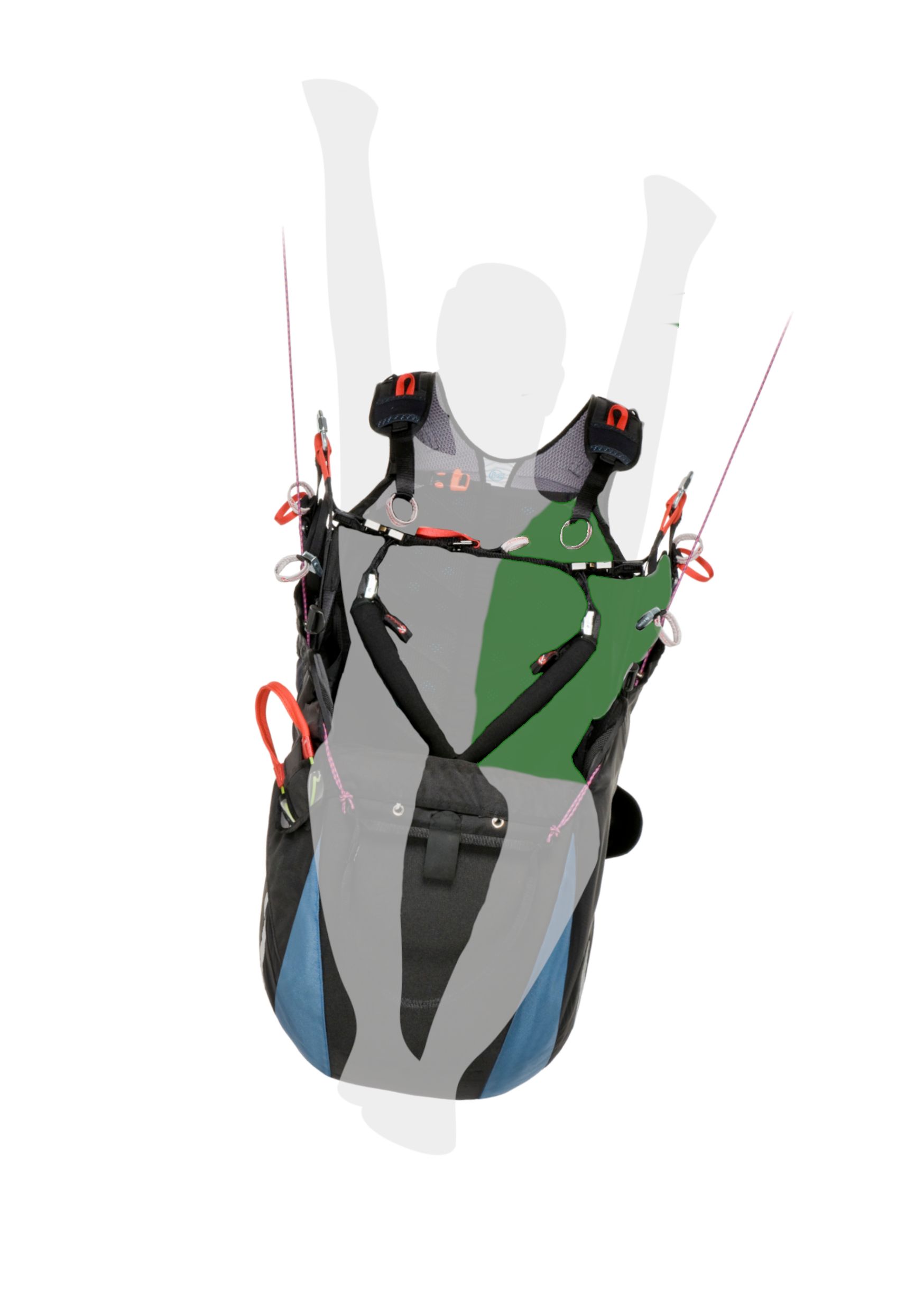
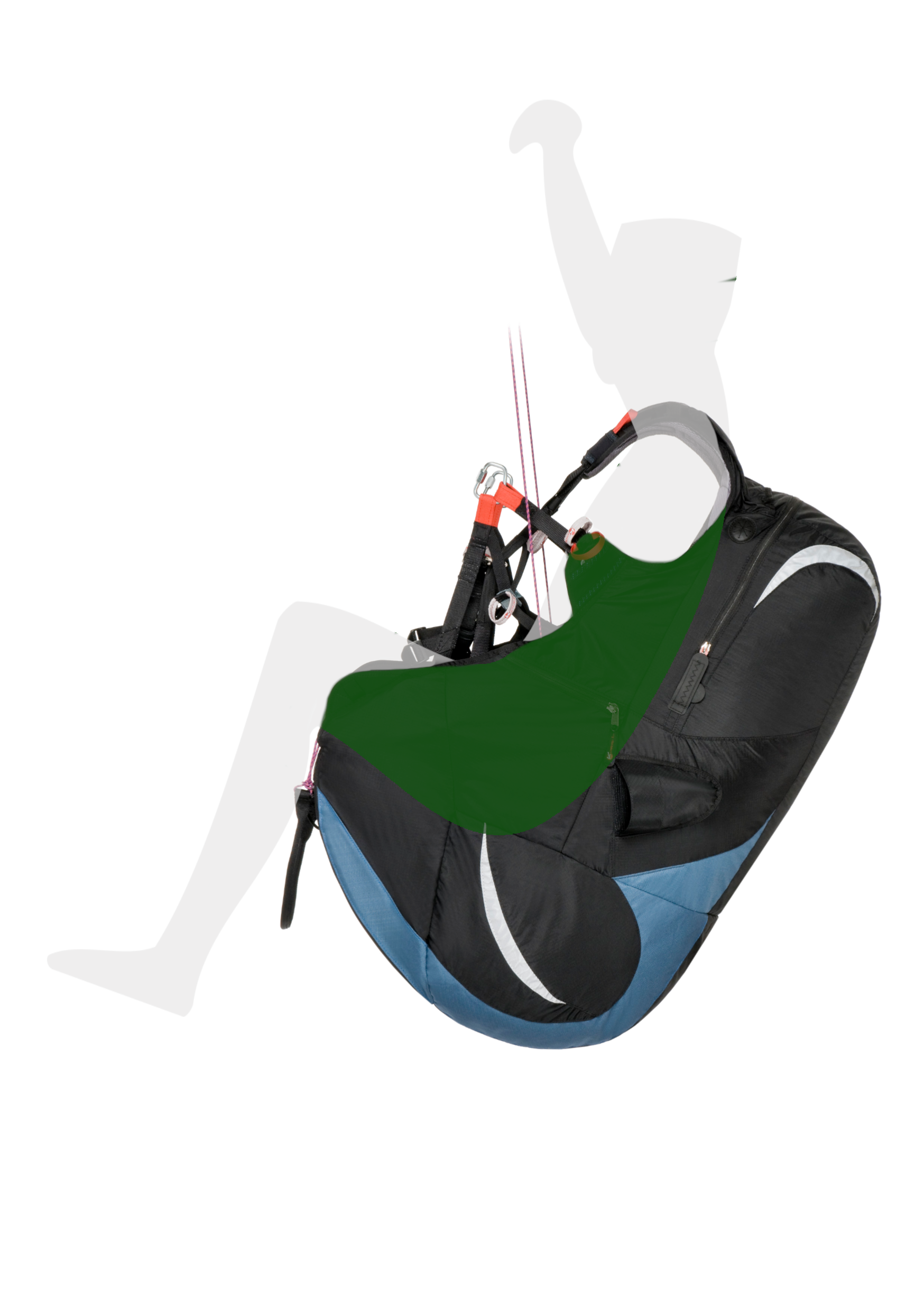
The diagram shows the difference in weight distribution between a straight flight position (shown in blue) and a banked turn position (shown in green). Consequently, it is essential to seek comfort in the position where you are likely to spend most of your flying time. When testing equipment, especially on a gantry, it's important to be able to simulate roll in order to check lateral support and comfort in this position. Don't settle for a straight, balanced position, which may not necessarily be the one in which you'll spend most of your flying time.
The comfort required in a harness will therefore also depend on the type of flights planned and the level of each pilot.
CONCLUSION
The comfort of a harness depends on a number of important criteria to be taken into account when choosing a model that will accompany you for many years:
Adjustments: A harness with numerous adjustments will enable you to fine-tune its geometry and feel well supported. Although it may seem complex at first, a harness with adjustment options offers greater flexibility to resolve any discomfort.
Construction: The experience accumulated by a manufacturer over the years can guarantee unquestionable know-how and expertise in the construction of a harness. The design techniques developed as a result of this experience generally lead to high-performance solutions in terms of comfort.
Flying position: Your flying position will influence your comfort, especially over longer periods. A reclining position will naturally be more comfortable than a seated position for longer flights.
Level of experience: There's no point in choosing a harness designed for 10-hour flights if you're still a beginner, or if you're simply planning local flights. When you opt for an ultra-light harness for mountain flights, it's obvious that it won't be able to offer the same level of comfort as a cross-country harness after several hours of flying. But it's not designed for that purpose either.
By taking these criteria into account, you'll be able to choose a harness that meets your specific needs in terms of comfort, depending on your level of experience and the type of flying you plan to do.
